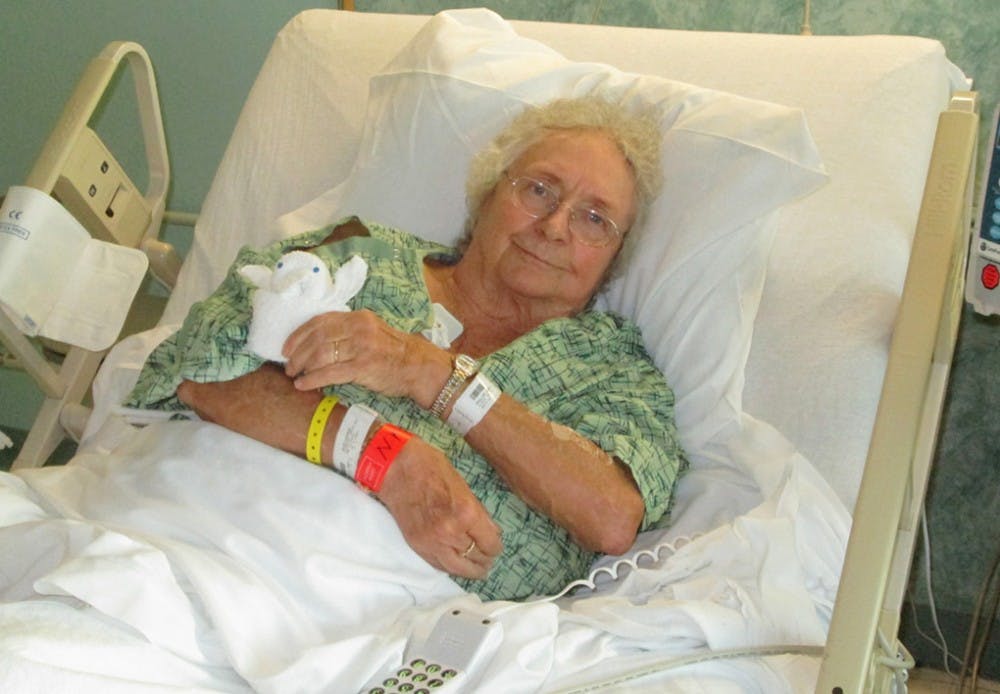Of the six leading causes of death in the United States, Alzheimer’s is the only that cannot be prevented or slowed.
An estimated 5.4 million Americans suffer from Alzheimer’s disease. In comparison to more well-understood diseases like cancer and heart disease, Alzheimer’s is difficult because there aren’t any tools that easily diagnose it or any medications to effectively treat it.
Other diseases such as diabetes, hypertension, hyperlipidemia and cancer have many tools for clinical care.
For heart disease, the measurement of serum cholesterol levels is a biomarker for patients at risk, and drugs are effective at lowering high cholesterol levels. Since blood cholesterol is recognized as a surrogate biomarker by the Food and Drug Administration (FDA), clinical trials are readily approved by simply showing the ability of the drug to lower cholesterol.
Despite the extensive amount of time and money that has been spent on Alzheimer’s research, no novel treatments have been passed in the last 16 years.
The majority of efforts have been focused on drugs that target beta-amyloid proteins, which form plaques in the brains of patients with Alzheimer’s. However, these trials have lacked significant results to support the success of the drugs.
One of the challenges associated with this approach is the lack of affordable and noninvasive biomarkers. Biomarkers work by identifying molecular targets that can be used to assess the risk of Alzheimer’s developing in an individual. They would also be useful in determining the most fitting therapy for a patient.
Currently, positron emission tomography (PET) brain imaging and cerebrospinal fluid (CSF) based amyloid and tau tests are available for Alzheimer’s; however only five percent of patients in the United States have been tested due to restrictions from cost and access.
Dr. Howard M. Fillit, a clinical professor in Geriatric Medicine at Mount Sinai, comments on the functionality of these scans in an article from Scientific American.
“The scans showed that ‘dementia expert’ doctors practicing in the community misdiagnose Alzheimer’s disease in about 50 percent of cases and change their management and treatment of patients nearly 70 percent of the time,” Fillit writes.
The FDA has now issued guidelines acknowledging the importance of biomarkers in demonstrating the effectiveness of clinical trials for Alzheimer’s.
Dementia is a condition characterized by a decline in cognitive function caused by damage to nerve cells that affects the functionality of neurons. The damage can cause changes in memory, behavior and thought.
Alzheimer’s is one of the types of dementia that is characterized by brain cell death, eventually resulting in the loss of control over basic bodily functions and ultimately leading to death. It is the most common type of dementia, encompassing between 60 and 80 percent of all dementia cases.
Although there is no concrete cure for the condition, a recent study reported the effect of exercise on delaying cognitive decline in individuals carrying a genetic mutation for Alzheimer’s.
Maria C. Carrillo, the chief science officer for the Alzheimer’s Association, is excited for implications of the study.
“The results of this study are encouraging, and not only for individuals with rare genetically-caused Alzheimer’s disease,” Carrillo said in a press release.
The combination of biomarker development and lifestyle changes to promote the delay of Alzheimer’s is the beginning of a solution to the condition, though further research could aid.
“If further research confirms this relationship between physical activity and later onset of dementia symptoms in ADAD, then we need to expand the scope of this work to see if it also is true in the millions of people with more common, late onset Alzheimer’s,” Carillo said.





